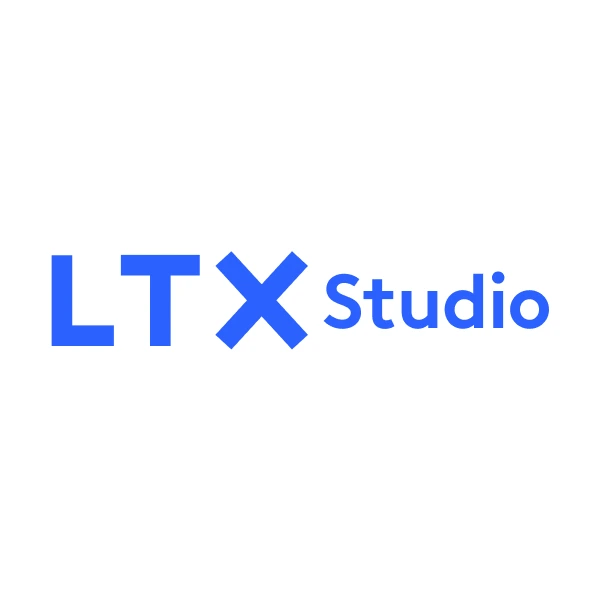Blu-ray replaced DVD. Netflix streams in 1080p. YouTube defaults to HD playback. High definition transformed video from fuzzy analog to crystal-clear digital.
Viewers now expect sharp, detailed imagery across all screens.
What is high definition, and how can tools like LTX deliver HD quality content? Let’s dive into the resolution standard that defines modern video.
{{blog-banner-video04}}
What is High Definition (HD)?
High definition (HD) is a video resolution standard that’s way sharper than standard definition. HD video has 720 or 1080 horizontal lines of pixels. More pixels means more detail, clarity and visual information.
HD matters because it matches how humans see detail. Standard definition looks blurry on modern screens. HD gives you crisp imagery that matches viewer expectations. It’s the industry baseline for professional content.
The transition from SD to HD was the digital revolution for television and film. Analog limitations disappeared. Digital HD opened up new creative possibilities and distribution methods.
High Definition Meaning
High definition meaning refers to video formats that go beyond standard definition’s 480-line resolution. HD standards are 720p (1280x720) and 1080p (1920x1080). The “p” means progressive scan that displays full frames at once.
Now that you know what high definition means, it’s about pixel density and clarity. More pixels in a frame means sharper images. Text is readable. Faces show detail. Environments reveal texture.
HD also means bigger screens. Standard definition looked terrible on big screens. HD looks good on any screen size. Home theaters became possible with HD content.
High Definition Types
There are different high definition types for different production and distribution needs.
720p HD has 1280x720 pixels. Also called HD Ready. It’s noticeable improvement over standard definition. Common for web streaming and broadcast TV. Less demanding on bandwidth and storage.
1080p Full HD has 1920x1080 pixels. The standard for Blu-ray and premium streaming. Maximum HD clarity. Most common professional HD format. Balances quality with file size.
1080i HD uses interlaced scanning that shows half the frame at a time. Common in broadcast TV. Lower bandwidth requirements than 1080p. Can show motion artifacts. Progressive formats are generally preferred.
4K Ultra HD is beyond HD with 3840x2160 pixels. Four times 1080p resolution. Becoming the standard for premium content. Future-proof quality. LTX generates 4K content with advanced AI models.
8K goes beyond 4K with 7680x4320 pixels. Mainly for large-format displays and future-proofing. Limited content availability. Huge file sizes and processing requirements.
High Definition Examples
HD adoption impacted various media and industries.
Blu-ray format (2006) brought 1080p to home video. Better quality than DVD drove adoption. Physical media’s last major format before streaming dominance.
YouTube HD (2008) allowed user-uploaded HD content. Democratized HD video distribution. Creators could share high-quality content for free. Raised audience expectations globally.
Netflix streaming pioneered HD streaming delivery. Bandwidth improvements enabled consistent 1080p. Changed how we consume television and film. Made HD the standard for home viewing.
Digital cinema adopted HD for theatrical projection. Film projectors gave way to digital. 2K and 4K became cinema standards. HD enabled consistent quality across theaters.
Smartphone cameras shoot HD natively. iPhone popularized HD video recording. Consumers can create broadcast-quality footage casually. HD became mainstream rather than professional-only.
Gaming consoles delivered HD graphics. PlayStation 3 and Xbox 360 generation established 1080p gaming. Visual fidelity matched cinematic experiences. HD gaming drove display adoption.
Creating HD Film Content with LTX
LTX creates high-definition video with AI-powered production tools.
Create HD video content across multiple resolution options. Generate 720p, 1080p or 4K depending on your needs. The platform handles HD rendering automatically.
Upscale generated content to HD quality. Turn lower-resolution drafts into high-definition exports. Polish visuals for final delivery.
Generate cinematic quality visuals matching professional HD standards. Create sharp, detailed imagery for any platform. From social media to theatrical release.
Use HD resolution for storyboards and animatics. Preview projects in high quality. Make informed decisions about visual details.
Export HD videos in multiple formats. Download 1080p MP4 files ready for distribution. Share HD content across platforms maintaining quality.
The LTX-2 model delivers native 4K without upscaling. Generate Ultra HD content efficiently. Access professional resolution without expensive equipment.
This is HD democratization. Independent creators can achieve broadcast-quality visuals. Focus on storytelling rather than video technicalities.
Conclusion
High definition transformed video from fuzzy analog to sharp digital. HD is the baseline quality standard across all platforms.
From streaming to cinema, we expect crisp detailed imagery HD provides.
Heading
November 16, 2025


















.png)





